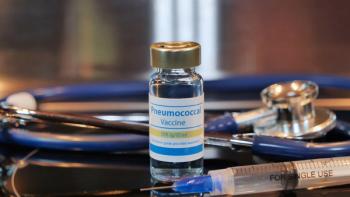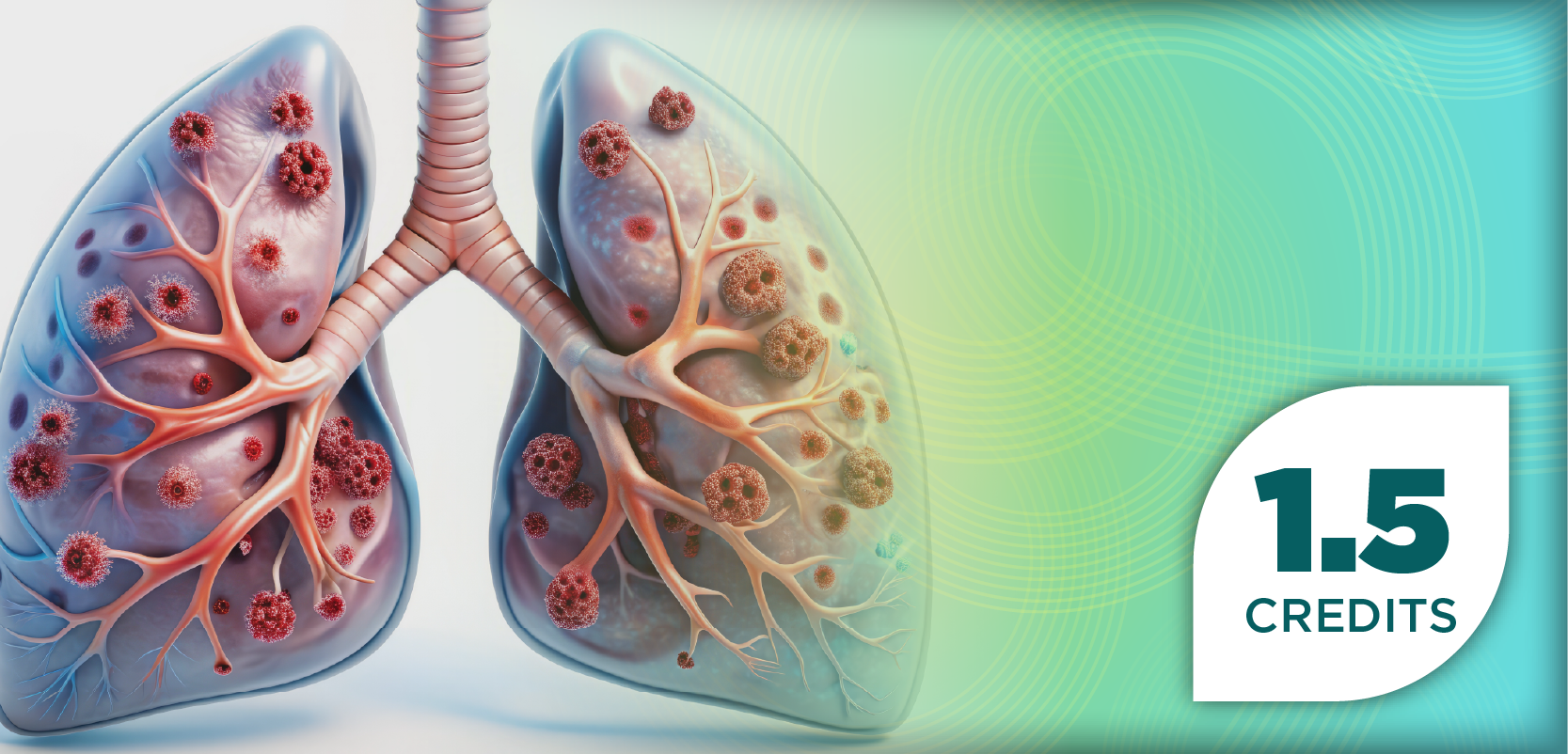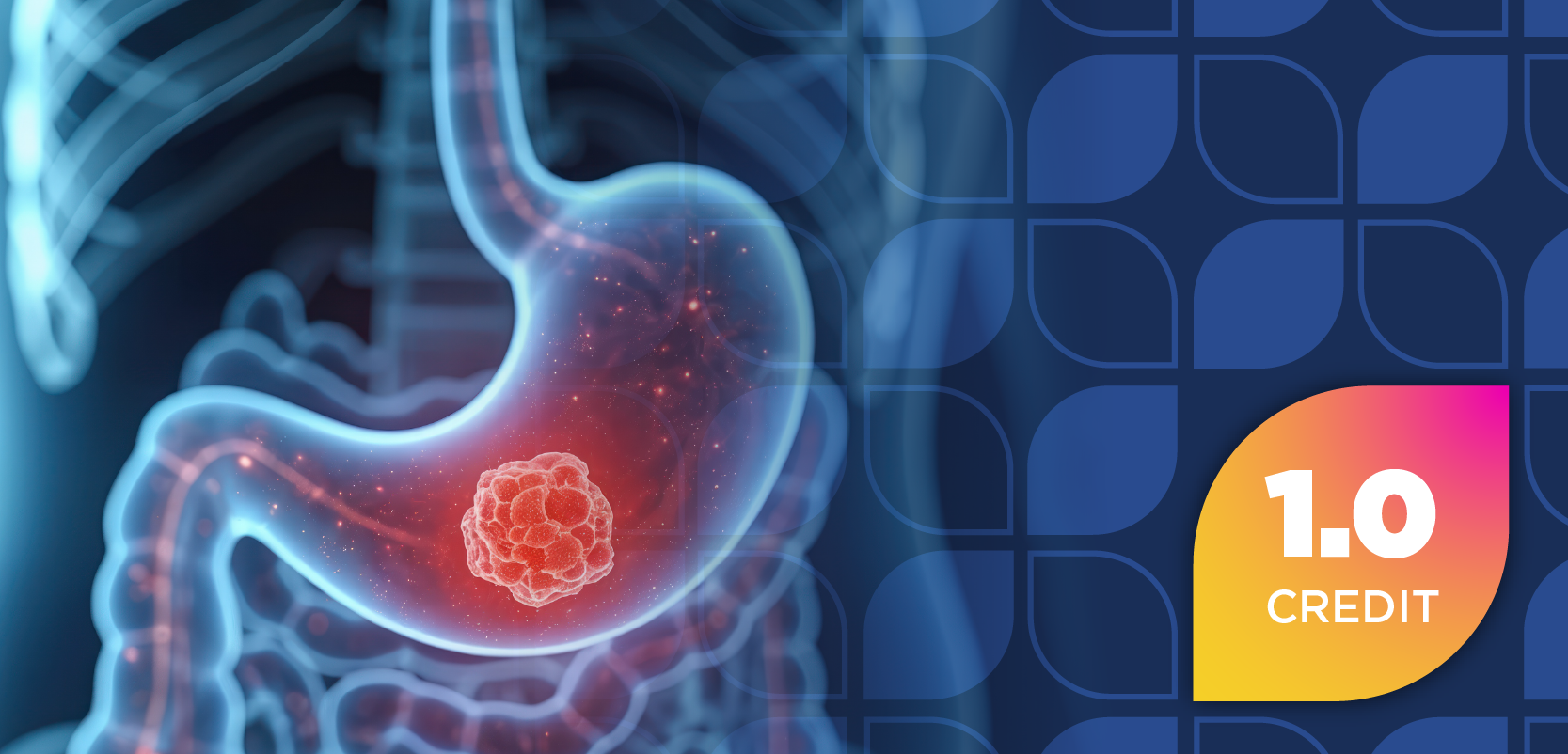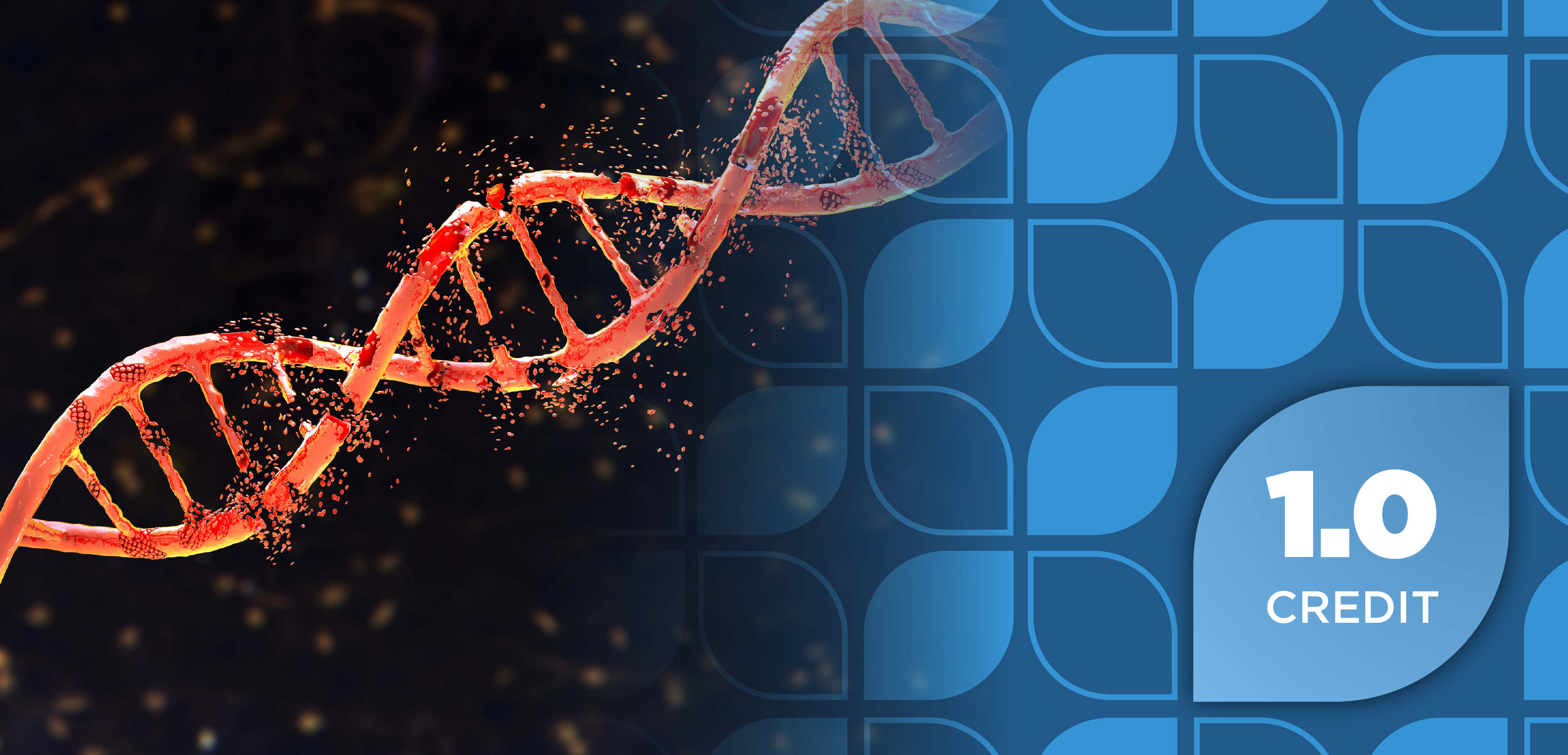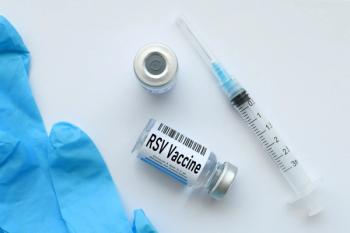
From Type 1 to Type 2 and Beyond: Navigating the Landscape of Diabetes

Key Takeaways
- Diabetes prevalence in the US is projected to reach 14.9% by 2025, with type 2 diabetes accounting for 90-95% of cases.
- Type 1 diabetes is autoimmune, often presenting in childhood, while LADA shares features of both type 1 and type 2 diabetes.
Explore the rising prevalence of diabetes in the US, its various types, and the critical role pharmacists play in patient care.
The prevalence of diabetes in the United States (US) continues to increase. In 2021, approximately 38.4 million Americans (11.6%) of the population had diabetes.1 It is anticipated that the prevalence of diabetes in the US will rise to approximately 14.9% in the US in 2025.2 There are 3 main types of diabetes, type 1, type 2, and gestational. Type 1 diabetes (T1D) is due to autoimmune Beta cell destruction, leading to absolute insulin deficiency while type 2 diabetes (T2D) is due to progressive loss of beta cell insulin secretion and is non-autoimmune in nature. Finally, gestational diabetes is diabetes that is diagnosed in the second or third trimester that was not overt diabetes prior to gestation.1
However, there are also several less common types of diabetes. This includes type 1.5 or latent autoimmune diabetes of adults (LADA) and 2 types of monogenic diabetes syndrome including maturity-onset diabetes of the young (MODY) and neonatal diabetes. Additionally, there are also several other types of diabetes including pancreatic diabetes, cystic fibrosis related diabetes and post transplantations diabetes.3 In 2025, the International Diabetes Federation (IDF) officially recognized a previously underdiagnosed form of diabetes that affects young, undernourished individuals in low and middle-income countries.4
Pharmacists are among the most accessible and trusted health care professionals.5 Therefore, it is imperative that they understand the different types of diabetes. The purpose of this article is to provide pharmacists with resources regarding the different types of diabetes empowering them to better support their patients and tailor treatment regimens more effectively.
Type 1 Diabetes
T1D affects approximately 2 million Americans, accounting for about 5.2% of all diagnosed diabetes cases and roughly 0.6% of the total US population.2 Among these, an estimated 304,000 individuals—approximately 15.2%—are children and adolescents under the age of 20.1
LADA was first described in 1993 and shares characteristics of both T1D and T2D, which is why it is sometimes referred to as type 1.5. It may affect up to 50 million individuals globally, with that number expected to rise. Approximately 15% of adults initially diagnosed with T2D test positive for autoantibodies, indicating a progressive autoimmune mechanism of β-cell destruction.⁶ Based on these findings, the American Diabetes Association (ADA) classifies LADA under T1D.
T1D can develop at any age, though it most commonly presents in childhood or adolescence. A family history of the disease significantly increases the risk, and genetic factors such as autoimmunity and specific HLA genotypes are well-established contributors. In the US, White individuals are more likely to develop T1D than African American or Hispanic/Latino populations.⁷ Environmental triggers, including cold climates and viral infections, may also play a role in initiating the autoimmune response.⁸ LADA, while genetically linked to autoimmunity, is influenced by additional factors such as low birth weight and lifestyle risks commonly associated with T2D, including smoking, obesity, and consumption of sugar-sweetened beverages.⁶
Up to 80% of individuals with newly diagnosed T1D present with DKA at the time of diagnosis.
A diagnosis of diabetes can be made based on any one of the following criteria:
- Random plasma glucose ≥200 mg/dL in the presence of classic symptoms of hyperglycemia (e.g., polyuria, polydipsia, polyphagia, unexplained weight loss)
- Fasting plasma glucose (FPG) ≥126 mg/dL after at least 8 hours of fasting
- Hemoglobin A1C ≥6.5% using a standardized and certified assay
- 2-hour plasma glucose ≥200 mg/dL measured during an oral glucose tolerance test (OGTT) with a 75-gram glucose load after an overnight fast of at least 8 hours
To confirm a diagnosis of T1D, additional testing should be performed to detect autoantibodies. These include glutamic acid decarboxylase (GAD65) antibodies, insulin autoantibodies (IAA), tyrosine phosphatase-like protein IA-2 antibodies, and zinc transporter 8 (ZnT8) antibodies.⁹ Over 90% of individuals newly diagnosed with T1D have one or more autoantibodies.
Screening protocols for T1D vary across clinical guidelines.¹⁰ According to the ADA’s Standards of Care in Diabetes—2025, individuals with a family history of T1D or elevated genetic risk should undergo islet autoantibody screening. This, combined with education and closer follow-up, may help prevent life-threatening diabetic ketoacidosis at the time of diagnosis.¹¹
LADA is typically diagnosed in individuals over the age of 30 who present with features of both T1D and T2D. These patients do not require insulin for at least 6 months after diagnosis but test positive for type 1–associated islet autoantibodies. Due to the risk of false-positive results, islet autoantibody testing is generally not recommended in patients who lack clinical signs suggestive of autoimmune diabetes, as it may lead to misdiagnosis and inappropriate management.12,13
T1D is primarily caused by autoimmune destruction of pancreatic β-cells, resulting in absolute insulin deficiency. The rate of β-cell destruction varies significantly—rapid in some individuals, especially children, and slower in others, particularly adults, as seen in cases of LADA. Additionally, individuals with LADA exhibit insulin resistance even after correction for body mass index.⁶
A small subset of T1D cases, estimated at 5% to 10%, is classified as idiopathic.¹¹
Insulin therapy is essential in the management of T1D and may be delivered through either multiple daily injections (MDI) or continuous subcutaneous insulin infusion (CSII). Both methods provide basal insulin to meet background metabolic needs and prandial insulin to manage glucose spikes associated with meals.⁹
In contrast to the standard insulin monotherapy used in T1D, individuals with LADA may not require insulin at the time of diagnosis. Oral antidiabetic agents can be considered in the early management of LADA—not only to achieve optimal glycemic control but also to potentially preserve residual β-cell function, aligning with treatment goals seen in early-stage T1D.
Currently, no medications are specifically approved by the FDA for the treatment of LADA. While further research is needed, metformin has demonstrated benefits in improving insulin sensitivity and metabolic parameters; however, its role in β-cell preservation remains uncertain. Thiazolidinediones (TZDs) have shown some protective effects on islet β-cell function in select studies, though their use is limited by adverse effects such as weight gain, fluid retention, and cardiovascular risks. The overall efficacy of both metformin and TZDs in LADA remains inconclusive.
Dipeptidyl Peptidase-4 (DPP-4) inhibitors have also demonstrated potential β-cell protective effects and appear to be a safe therapeutic option in LADA. Sodium-glucose cotransporter-2 (SGLT2) inhibitors have been suggested as promising agents, particularly in overweight populations, but they should be considered with caution due to their potential to mask progression to insulin deficiency and increase the risk of diabetic DKA.
Glucagon-like peptide (GLP-1) receptor agonists may offer dual benefits in LADA by supporting weight management and potentially preserving β-cell function. Some studies have reported that, in adults with recent-onset T1D, GLP-1 RAs may contribute to both A1c reduction and β-cell preservation.
Insulin therapy remains a safe and effective cornerstone in LADA management. However, the optimal timing for initiation—particularly while endogenous β-cell function persists—has not been clearly established.
Sulfonylureas are generally discouraged in LADA due to their potential to accelerate β-cell exhaustion and depletion.¹³
Type 2 Diabetes
Over 38 million people in the US have diabetes—approximately 1 in 10 individuals. Type 2 diabetes (T2DM) accounts for 90–95% of all diagnosed cases.1
Several risk factors are associated with the development of T2DM, including:
- Family history: Having a first-degree relative with diabetes
- Race/ethnicity: Increased risk among African American, Latino, Native American, and Asian American populations
- Medical history: Cardiovascular disease, gestational diabetes mellitus (GDM), and prediabetes
- Medical conditions: Hypertension (≥130/80 mmHg or on antihypertensive therapy), HDL cholesterol <35 mg/dL (<0.9 mmol/L), triglycerides >250 mg/dL (>2.8 mmol/L), polycystic ovary syndrome (PCOS), and clinical signs of insulin resistance such as severe obesity, acanthosis nigricans, and metabolic dysfunction
- Lifestyle: Physical inactivity
- Medication use: Glucocorticoids, statins, thiazide diuretics, certain HIV medications, and second-generation antipsychotics¹¹
Recommendations for screening for prediabetes and T2DM vary across major guidelines. The American Association of Clinical Endocrinology (AACE) advises screening all adults aged 35 years and older who present with risk factors.⁹ In contrast, the ADA recommends screening all adults with overweight or obesity who have at least one additional risk factor, as well as all individuals beginning at age 35, regardless of weight status.¹¹
The diagnostic criteria for T2DM are identical to those used for T1D. Autoantibody testing is typically not required for diagnosing T2DM.
The specific etiologies of T2DM are not fully understood. While most individuals with T2DM are overweight or obese, this is not universally the case. Excess weight contributes to insulin resistance, and some individuals may have a higher percentage of body fat concentrated in the abdominal region, including areas involved in metabolic dysfunction. As a result, there is a progressive loss of β-cell insulin secretion accompanied by variable defects in insulin sensitivity.⁹ ¹¹
Patients should continue prioritizing lifestyle modification, with sustained efforts to achieve or maintain optimal weight. When selecting treatment options, it is important to consider comorbidities such as atherosclerotic cardiovascular disease (ASCVD), heart failure, stroke or transient ischemic attack (TIA), chronic kidney disease (CKD), and overall weight status. Newer therapeutic agents—including GLP-1 receptor agonists and SGLT2 inhibitors—have demonstrated benefits in supporting cardiovascular and renal health, as well as promoting weight management.
Gestational Diabetes
GDM is defined as hyperglycemia first diagnosed during pregnancy. Gestational diabetes is the most common medical complication that women face during pregnancy, and failure to treat properly can lead to serious adverse health complications for both mother and child.15 Due to the growing number of overweight and obese people around the world, the prevalence of GDM has been steadily increasing. The IDF estimates that globally 1 in 6 live births had a GDM diagnosis. In the US around 7% of pregnancies are complicated by some type of diabetes with 86% of those cases being complicated by GDM.16
Risk factors for GDM include increased body weight (BMI >25), decreased physical activity, hypertension, first degree relative with DM, low HDL <35 mg/dl, polycystic ovarian disease (PCOS), A1c >5.7, previous diagnosis of GDM, cardiovascular disease (CVD), or newborn birth weight >4000g, and high-risk ethnicity (African American, Native American, Asian American, Latino, Pacific Islander)16
Diagnosis of GDM occurs between 24 & 28 weeks of pregnancy. During this time, all pregnant women regardless of medical history are given a glucose tolerance test known as the two-step approach. Women are initially given 50 g of glucose, typically in drink form, to consume all at once. Blood is drawn 1 hour later, and sugar levels are checked, a failed test occurs if levels are greater than or equal to 130mg/dl. Approximately 20% of women fail the 1-hour test and must complete the 3-hour oral glucose tolerance test. For the 3-hour test, a fasting level is taken, the woman is then given 100 g of glucose to consume, and levels are checked after 1 hour, 2 hours, and 3 hours. A presence of 2 or more abnormal results corresponds to a GDM diagnosis.16
GDM is caused from increased insulin resistance and insufficient insulin production. The primary mechanism involves maternal pancreatic β-cell dysfunction, which impairs insulin secretion and leads to maternal hyperglycemia. This dysfunction limits the body's ability to compensate for pregnancy-induced insulin resistance, resulting in elevated glucose levels. The combination of reduced glucose uptake and increased hepatic gluconeogenesis further worsens maternal hyperglycemia.
Excess maternal glucose readily crosses the placenta, causing fetal hyperglycemia. In response, the fetal pancreas increases insulin production, which promotes accelerated fetal tissue growth.¹⁶
Treatment for GDM begins with non-pharmacological approaches, including increased physical activity, dietary changes, and glucose monitoring. The current recommendation for exercise is 30 minutes per day at least 5 days per week. Glucose monitoring should occur 4 times per day, 1 to 2 hours after each meal and 1 fasting level.Dietary guidelines include 3 small to moderate meals per day with 2 to 3 snacks, consisting of whole-grain carbohydrates, protein, and unsaturated fats.16 In about 15% to 30% of GDM patients’ glucose levels cannot be maintained with diet and exercise alone, and the use of medications is necessary.
Pharmacotherapy is initiated if hyperglycemia is not well controlled by diet and exercise after 10 to 14 days.17 Insulin is the first line therapy for GDM due to its inability to cross the placenta making it a safer choice for the fetus. Oral hypoglycemic agents commonly used are glyburide and metformin although studies on their effectiveness and safety have shown mixed results. Both oral agents are thought to cross the placenta and increase the risk of fetal complications, making them second line choices for people that decline or are unable to afford insulin.18
Monogenic Diabetes
The term monogenic diabetes represents a group of non–insulin-dependent, single-gene causes of diabetes, and includes "c".¹⁹ It accounts for approximately 2% to 3% of all diabetes diagnosed before age 35, with an estimated 300,000 cases in the US. Monogenic diabetes results from one or more variations in regulatory genes associated with β-cell activity, leading to insulin resistance and insulin deficiency.19,20 Most forms of MODY are inherited in an autosomal dominant pattern and often present with a strong family history of diabetes across multiple generations.⁹
A major challenge in diagnosing monogenic diabetes in the pediatric population is the clinical and genetic heterogeneity of the condition. Diagnosis currently relies on a combination of family history, genetic testing, and clinical presentation.²⁰ Commercial panels for monogenic diabetes usually include sequencing of the GCK, HNF1B, HNF1b, and HNF4A genes. Syndromic features vary in presentation; patients may exhibit developmental delay, deafness, retinal changes, muscle defects, liver adenomas, renal or other organ cysts, genitourinary abnormalities, alkalosis, and hypomagnesemia.²¹ A normal blood glucose level and A1C test are common, however urinalysis often show glucosuria.19
There are over 20 genes linked to monogenic diabetes, with the most common being GCK, HNF1A, HNF1B, and HNF4A. The pathophysiology varies significantly depending on the specific gene mutation, thus there is no universal pharmacological treatment. GCK-MODY results from decreased β-cell sensing of glucose due to mutations in the GCK gene, which encodes the glucokinase enzyme. Because of reduced glucokinase activity, pharmacological treatments are generally ineffective, and treatment is not recommended. The exception is pregnant mothers whose fetus does not inherit the GCK mutation. In these cases, insulin is the treatment of choice. 19
HNF1A-MODY is caused by heterozygous variants in hepatocyte nuclear factor 1-alpha (HNF1α), leading to improper development of certain organs, including β-cells. Patients with HNF1A-MODY may respond temporarily to sulfonylureas but often require insulin later. Some studies suggest that SGLT-2 inhibitors may be effective.19,21
HNF1B-MODY results from variants in the HNF1B gene, causing β-cell dysfunction and insulin resistance. Most patients with HNF1B-MODY require insulin and do not respond to sulfonylureas. HNF4A-MODY is caused by variants in the gene encoding HNF4α and is characterized by progressive loss of insulin secretion. Patients are initially treated with sulfonylureas, but as insulin secretion declines with age, insulin therapy may become necessary.21
Neonatal diabetes mellitus (NDM) is another form of monogenic diabetes. This rare condition is diagnosed at a very early age, typically before 6 months, and occurs in approximately 1 in 100,000 live births. Infants with NDM are small at birth and have insulin deficiency, requiring insulin as a fetal growth factor.19
Pancreatic Diabetes (Type 3C diabetes)
Pancreatic diabetes, also known as type 3C diabetes, results from damage to the pancreas that impairs insulin production. Common identified causes include chronic pancreatitis, cystic fibrosis, haemochromatosis, pancreatic ductal adenocarcinoma, and prior pancreatic surgery.²² Approximately 5% to 10% of individuals in Western populations have pancreatic diabetes, with pancreatic disease, surgical removal of the pancreas, and pancreatitis being the leading causes.²³
Patients are often initially misclassified as having T2D due to the similarity in symptoms and the under recognition of pancreatic disease as a contributing factor. Diagnostic criteria for pancreatic diabetes, as proposed by Ewald and Bretzel, include: (1) the presence of pancreatic exocrine insufficiency, (2) evidence of pathological pancreatic imaging, and (3) absence of T1DM-associated autoantibodies.²⁴
There are currently no studies supporting standardized treatment guidelines for pancreatic diabetes due to the diverse pathophysiological backgrounds of each case. As such, treatment options should be individualized and tailored to each patient.22, 23 Oral antihyperglycemics may be sufficient for patients with chronic pancreatitis–associated diabetes and mild hyperglycemia (HbA1c <8%).²³ Metformin is frequently used because of its lower risk of hypoglycemia and its antineoplastic properties, which may help prevent pancreatic ductal adenocarcinoma. Insulin is also a preferred treatment, particularly in patients with cystic fibrosis–related diabetes.
GLP-1 agonists should be avoided due to risk of pancreatitis and reduced appetite, which would not be favorable in this patient population. Although treatments vary, the primary goal of treatment is to prevent short term metabolic complications which can lead to morbidity and delay treatment in cancer patients.22
Cystic Fibrosis-Related Diabetes
Cystic fibrosis–related diabetes (CFRD) is a category of pancreatic diabetes resulting from abnormal glucose metabolism in individuals with cystic fibrosis and is characterized by insulin deficiency and intermittent insulin resistance.25 It is highly prevalent in this population, with incidence increasing with age: approximately 2% of children, 19% of adolescents, and up to 50% of adults aged 30 and older are affected.²⁶ As survival rates among individuals with cystic fibrosis continue to improve, the prevalence of CFRD has been rising.
In addition to age, other risk factors for CFRD include specific CFTR genotypes, female sex, corticosteroid use, and hepatobiliary disease.²⁷ CFRD does not typically present with classic symptoms of diabetes, so annual screening is recommended. The Cystic Fibrosis Foundation and the ADA have published guidelines recommending the 2-hour 75-gram oral glucose tolerance test (or 1.75 g glucose/kg for individuals under 42 kg body weight), which remains the only acceptable screening method for CFRD.²⁵
The etiology of CFRD involves β-cell dysfunction resulting from fibrosis and scarring of the exocrine pancreas, along with decreased islet cell mass and quantity, leading to both insulin resistance and deficiency.²⁵ While macrovascular disease is rare in this patient population, these effects can result in microvascular complications such as retinopathy. The risk of such complications depends on both disease duration and glycemic control.²⁷
The Cystic Fibrosis Foundation and the ADA currently recommend insulin as the only official treatment for CFRD.²⁷ Insulin therapy not only improves glycemic control but also supports weight gain and enhances pulmonary function in this patient population.²⁵
Post Transplant Diabetes
Post transplant diabetes (PTDM) is newly diagnosed DM following a solid organ transplant.PTDM can increase the risk of morbidity and mortality after a transplant with most cases occurring in the first-year post – transplant. PTDM affects around 10% to 40% of patients that have undergone a solid organ transplant. 28, 29, 30 When broken down further, PTDM affects 10% to 20% of patients undergoing a renal transplant and 20% to 40% of patients undergoing a liver, heart, or lung transplant over 5 years.31
Risk factors for PTDM include many of the same risk factors as T2DM; older age, sedentary lifestyle, overweight/obese, genetics, and family history along with risk factors directly related to the transplant including post-transplant weight gain, hepatitis C or Cytomegalovirus infection, and the use Calcineurin Inhibitors and Glucocorticoids.30
Diagnosis of PDTM follows the general ADA criteria for diagnosing T2DM. A patient is diagnosed with PTDM if they meet one of the following criteria; fasting plasma glucose of ≥126 mg/dL, a 2-hour glucose level of ≥200 mg/dL following a 75gm oral glucose tolerance test, an A1c of ≥ 6.5%, or if the patient is showing classic symptoms of hyperglycemia and has a random plasma glucose of≥200 mg/dL. The preferred method of diagnosis is the oral glucose tolerance test followed by fasting and random glucose levels. Immediately following surgery hyperglycemia is very common and often short lived in transplant patients due to stress, pain, infection, immunosuppression, and enteral and parenteral feedings. This along with the increase in bleeding and need for transfusions make A1c diagnosis less reliable due to the alteration of the hosts red blood cell population.31
Immunosuppression post-transplant traditionally is a triple therapy regimen consisting of a Calcineurin Inhibitor (CNI), a proliferation inhibitor, and a glucocorticoid.The doses and duration of therapy are dependent on the type of transplant, host response, and hospital protocols.This regimen of immunosuppression plays a significant role in the development of post-transplant diabetes, with glucocorticoids causing the most drug-induced hyperglycemia. Glucocorticoids cause or worsen insulin resistance by increasing hepatic glucose production, worsening insulin resistance in adipose tissue through enhanced lipolysis, and reducing insulin-stimulated glucose uptake in skeletal muscle.³¹ Calcineurin plays an important role in Beta cell function and growth, and CNIs appear to have a specific adverse effect on beta cell function, leading to decreased insulin secretion.30 CNI’s also increase islet cell apoptosis and reduce beta cell mass. In striated muscle and adipose tissue, CNI’s reduce the number of GLUT-4 in cell membranes, leading to hyperglycemia due to the inhibition of glucose uptake by those cells.32
Managing PTDM requires a multidisciplinary team approach, including transplant and diabetes specialists and should be individualized based on the patients age, co-morbidities, ability to self-manage, and personal preference. While there is no specific recommendation for the best therapy for patients with PTDM, management often mimics therapy for T2D, using insulin, oral medications, and lifestyle modifications to achieve adequate glucose control. In the immediate post-operative phase if the patient is experiencing hyperglycemia IV or subcutaneous insulin is recommended. If the patient is clinically improving and stable on immunosuppression but still experiencing hyperglycemia, oral glucose-lowering medications are often started. The choice of oral medication is dependent on the potential for drug interactions with current immunosuppressants, renal function, and potential side effects. For some patients, changing the immunosuppression regimen may help with the management of hyperglycemia.30
Conclusion
The classification of diabetes mellitus has evolved significantly over time, driven by advances in genetics, diagnostic testing, and therapeutic technologies. As monitoring tools and treatment strategies continue to improve, it is essential for pharmacists to stay informed about emerging diabetes subtypes and their corresponding therapeutic approaches to ensure optimal patient care.
REFERENCES
1.Diabetes Basics. CDC. May 15, 2024. Updated Accessed June 16, 2025. https://www.cdc.gov/diabetes/about/index.html
2. American Diabetes Association. Statistics About Diabetes. Updated November 2, 2023. Accessed August 28, 2025. https://diabetes.org/about-diabetes/statistics/about-diabetes
3. American Diabetes Association Professional Practice Committee. 2. Diagnosis and Classification of Diabetes: Standards of Care in Diabetes-2025. Diabetes Care. 2025;48(Suppl.1):S27-S49. https://doi.org/10.2337/dc25-S002
4. IDF launches new type 5 diabetes working group. International Diabetes Federation. Accessed June 16, 2025. https://idf.org/news/new-type-5-diabetes-working-group/
5. Manolakis PG, Skelton JB. Pharmacists' contributions to primary care in the United States collaborating to address unmet patient care needs: the emerging role for pharmacists to address the shortage of primary care providers. Am J Pharm Educ. 2010 Dec 15;74(10):S7. doi: 10.5688/aj7410s7. PMID: 21436916; PMCID: PMC3058447.
6. Rajkumar V, Levine SN. Latent Autoimmune Diabetes. In: StatPearls. Treasure Island, FL: StatPearls Publishing; 2024. Accessed September 10, 2025. Available from: https://www.ncbi.nlm.nih.gov/books/NBK557897/
7. Centers for Disease Control and Prevention. Diabetes Risk Factors. Updated May 15, 2024. Accessed August 28, 2025. https://www.cdc.gov/diabetes/risk-factors/index.html
8. Rewers, M., Stene, L. C., & Norris, J. M. (2022). Risk factors for type 1 diabetes. In National Institute of Diabetes and Digestive and Kidney Diseases (Ed.), Diabetes in America (3rd ed., Chapter 11). U.S. Department of Health and Human Services. https://www.niddk.nih.gov/-/media/Files/Strategic-Plans/Diabetes-in-America-3rd-Edition/DIA_Ch11.pdf
9. Blonde L, Umpierrez GE, Reddy SS, McGill JB, Berga SL, Bush M, et al. American Association of Clinical Endocrinology Clinical Practice Guideline: Developing a Diabetes Mellitus Comprehensive Care Plan—2022 Update. Endocr Pract. 2022;28(8):923–966. doi:10.1016/j.eprac.2022.08.002
10. Pippitt K, Li M, Gurgle HE. Diabetes mellitus: screening and diagnosis. Am Fam Physician. 2016;93(2):103–109.
11. American Diabetes Association. 2. Diagnosis and classification of diabetes: Standards of Care in Diabetes—2025. Diabetes Care
12. Jones AG, McDonald TJ, Shields BM, Hagopian W, Hattersley AT. Latent autoimmune diabetes of adults (LADA) is likely to represent a mixed population of autoimmune (type 1) and nonautoimmune (type 2) diabetes. Diabetes Care. 2021;44(6):1243–1251. doi:10.2337/dc20-2834
13. Buzzetti R, Tuomi T, Mauricio D, et al. Management of latent autoimmune diabetes in adults: a consensus statement from an international expert panel. Diabetes. 2020;69(10):2037–2047. doi:10.2337/dbi20-0017
14. Centers for Disease Control and Prevention. Type 2 Diabetes. Updated May 15, 2024. Accessed August 29, 2025. https://www.cdc.gov/diabetes/about/about-type-2-diabetes.html
15. Modzelewski R, Stefanowicz-Rutkowska MM, Matuszewski W, Bandurska-Stankiewicz EM. Gestational diabetes mellitus—recent literature review. J Clin Med. 2022;11(20):6033. doi:10.3390/jcm11206033.
16. Quintanilla Rodriguez BS, Vadakekut ES, Mahdy H. Gestational Diabetes. In: StatPearls. Treasure Island, FL: StatPearls Publishing; 2023. https://www.ncbi.nlm.nih.gov/books/NBK545196/
17. Nakshine VS, Jogdand SD. A comprehensive review of gestational diabetes mellitus: impacts on maternal health, fetal development, childhood outcomes, and long-term treatment strategies. Cureus. 2023;15(11):e50262. doi:10.7759/cureus.50262.
18. McIntyre HD, Kampmann U, Clausen TD, Laurie J, Ma RCW. Gestational diabetes: an update 60 years after O’Sullivan and Mahan. J Clin Endocrinol Metab. 2025;110(1):e19–e31. doi:10.1210/clinem/dgae709.
19. Salguero MV, Arosemena M, Pollin T, et al. Monogenic Forms of Diabetes. 2023 Dec 20. In: Lawrence JM, Casagrande SS, Herman WH, et al., editors. Diabetes in America [Internet]. Bethesda (MD): National Institute of Diabetes and Digestive and Kidney Diseases (NIDDK); 2023-. Available from: https://www.ncbi.nlm.nih.gov/books/NBK597414/
20. Sun HY, Lin XY. Genetic perspectives on childhood monogenic diabetes: Diagnosis, management, and future directions. World J Diabetes. 2023 Dec 15;14(12):1738-1753. doi: 10.4239/wjd.v14.i12.1738. PMID: 38222792; PMCID: PMC10784795.
21. Nkonge KM, Nkonge DK, Nkonge TN. The epidemiology, molecular pathogenesis, diagnosis, and treatment of maturity-onset diabetes of the young (MODY). Clin Diabetes Endocrinol. 2020 Nov 4;6(1):20. doi: 10.1186/s40842-020-00112-5. PMID: 33292863; PMCID: PMC7640483.
22. Hart PA, Bellin MD, Andersen DK, Bradley D, Cruz-Monserrate Z, Forsmark CE, Goodarzi MO, Habtezion A, Korc M, Kudva YC, Pandol SJ, Yadav D, Chari ST; Consortium for the Study of Chronic Pancreatitis, Diabetes, and Pancreatic Cancer(CPDPC). Type 3c (pancreatogenic) diabetes mellitus secondary to chronic pancreatitis and pancreatic cancer. Lancet Gastroenterol Hepatol. 2016 Nov;1(3):226-237. doi: 10.1016/S2468-1253(16)30106-6. Epub 2016 Oct 12. PMID: 28404095; PMCID: PMC5495015.
23. Makuc J. Management of pancreatogenic diabetes: challenges and solutions. Diabetes Metab Syndr Obes. 2016 Aug 25;9:311-5. doi: 10.2147/DMSO.S99701. PMID: 27601927; PMCID: PMC5003514.
24. Hardt PD, Brendel MD, Kloer HU, Bretzel RG. Is pancreatic diabetes (type 3c diabetes) underdiagnosed and misdiagnosed? Diabetes Care. 2008 Feb;31 Suppl 2:S165-9. doi: 10.2337/dc08-s244. PMID: 18227480.
25. Doan LV, Madison LD. Cystic Fibrosis–Related Diabetes. [Updated 2023 Aug 14]. In: StatPearls [Internet]. Treasure Island (FL): StatPearls Publishing; 2025 Jan-. Available from: https://www.ncbi.nlm.nih.gov/books/NBK545192/
26. Moran A, Dunitz J, Nathan B, Saeed A, Holme B, Thomas W. Cystic fibrosis-related diabetes: current trends in prevalence, incidence, and mortality. Diabetes Care. 2009 Sep;32(9):1626-31. doi: 10.2337/dc09-0586. Epub 2009 Jun 19. PMID: 19542209; PMCID: PMC2732133.
27. Diabetes. J Endocr Soc. 2017 Oct 30;1(11):1386-1400. doi: 10.1210/js.2017-00362. PMID: 29264462; PMCID: PMC5686691.
28. Sharif A, Harini Chakkera, Aiko, et al. International Consensus on post-transplantation diabetes mellitus. Nephrology, dialysis, transplantation/Nephrology dialysis transplantation. Published online January 3, 2024. doi:https://doi.org/10.1093/ndt/gfad258
29. Matheus Rizzato Rossi, Marilda Mazzali, Vinicius M. Post-transplant diabetes mellitus: risk factors and outcomes in a 5-year follow-up. Frontiers in clinical diabetes and healthcare. 2024;5. doi:https://doi.org/10.3389/fcdhc.2024.1336896
30. Chowdhury TA. Post-transplant diabetes mellitus. Clinical Medicine. 2019;19(5):392-395. doi:https://doi.org/10.7861/clinmed.2019-0195
31. Peña JM, Cusi K. Posttransplant Diabetes Mellitus: Recent Developments in Pharmacological Management of Hyperglycemia. The Journal of Clinical Endocrinology and Metabolism. Published online July 6, 2023. doi:https://doi.org/10.1210/clinem/dgad395
32. Bashier AMK, Kumar D, Alalawi FJ, Al Nour H, Al Hadari AK, Bin Hussain AA. Post-Transplant Diabetes: Prevalence, Risk, and Management Challenges. Dubai Diabetes and Endocrinology Journal. Published online July 11, 2022:1-14. doi:https://doi.org/10.1159/000522092
Newsletter
Stay informed on drug updates, treatment guidelines, and pharmacy practice trends—subscribe to Pharmacy Times for weekly clinical insights.


